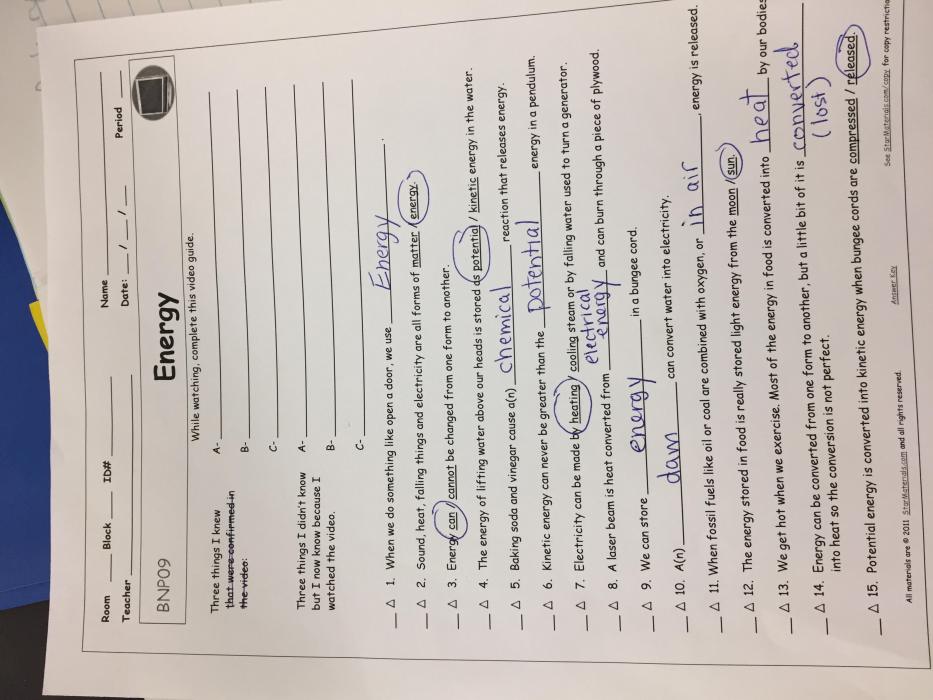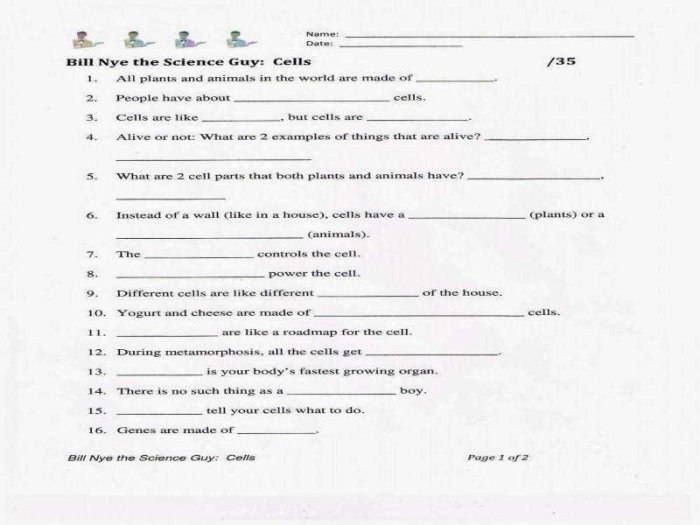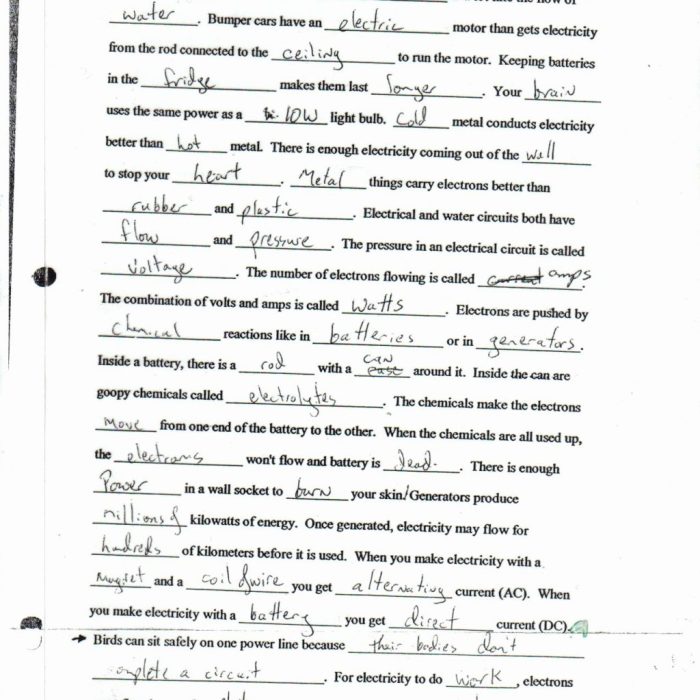Unveiling the “Bill Nye Energy Worksheet Answers,” this comprehensive guide embarks on an enlightening journey through the multifaceted realm of energy. Designed to illuminate the minds of learners, these worksheets delve into the intricacies of energy conservation, renewable and non-renewable sources, energy transformations, and consumption patterns.
Embarking on this exploration, we unravel the mysteries of energy, empowering individuals to make informed decisions and contribute to a sustainable energy future.
Within these worksheets, students encounter a treasure trove of knowledge, delving into the fundamentals of energy conservation, exploring the advantages of energy-efficient practices, and navigating the complexities of renewable and non-renewable energy sources. The worksheets foster a deeper understanding of energy transformations, unraveling the processes involved in electricity generation from diverse sources, and examining the efficiency and environmental implications of various power generation methods.
Bill Nye Energy Worksheets Overview
The Bill Nye Energy Worksheets provide comprehensive educational resources designed to enhance students’ understanding of energy concepts. These worksheets are targeted towards middle and high school students and align with science curriculum standards. They cover fundamental principles of energy, its sources, transformations, and conservation, promoting critical thinking and problem-solving skills.
Energy Conservation and Efficiency

Energy conservation refers to practices aimed at reducing energy consumption without compromising comfort or productivity. Energy-efficient practices highlighted in the worksheets include using energy-saving appliances, turning off lights when not in use, and implementing insulation measures. These actions help minimize energy waste and lower utility bills while contributing to environmental sustainability.
Renewable and Non-Renewable Energy Sources

| Characteristic | Renewable Energy | Non-Renewable Energy |
|---|---|---|
| Source | Naturally replenished over a short period | Depleted over time |
| Availability | Abundant | Limited |
| Environmental Impact | Generally low | Can be significant |
| Examples | Solar, wind, hydro | Fossil fuels, nuclear |
Energy Transformations and Power Generation

Energy transformations involve the conversion of one form of energy into another. The worksheets explain processes like burning fossil fuels to generate electricity, converting solar energy into electricity using photovoltaic cells, and harnessing wind energy to power turbines. They highlight the efficiency and environmental implications of different power generation methods.
Energy Consumption and Conservation
Energy consumption patterns are influenced by factors such as population growth, technological advancements, and economic activities. The worksheets provide strategies for reducing energy consumption in various settings, including homes, schools, and businesses. They emphasize the importance of energy audits, energy-efficient lighting, and renewable energy adoption.
Technological advancements and innovations play a crucial role in promoting energy efficiency.
Frequently Asked Questions: Bill Nye Energy Worksheet Answers
What is the primary purpose of the “Bill Nye Energy Worksheet Answers”?
To provide comprehensive explanations and solutions to the exercises presented in the “Bill Nye Energy Worksheets,” enhancing students’ understanding of energy concepts.
What topics are covered in these worksheets?
Energy conservation, renewable and non-renewable energy sources, energy transformations, power generation, and energy consumption patterns.
Who is the intended audience for these worksheets?
Students, educators, and anyone seeking to expand their knowledge of energy concepts.